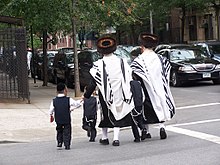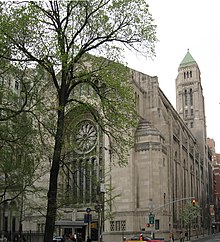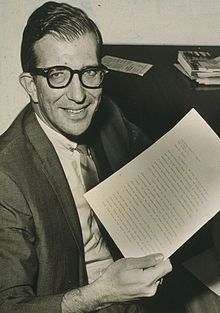
Haredi Judaism consists of groups within Orthodox Judaism that are characterized by their strict interpretation of religious sources and their accepted halakha and traditions, in opposition to more accommodating or modern values and practices. Its members are usually referred to as ultra-Orthodox in English; however, the term "ultra-Orthodox" is considered pejorative by many of its adherents, who prefer terms like strictly Orthodox or Haredi. Haredi Jews regard themselves as the most religiously authentic group of Jews, although other movements of Judaism disagree.
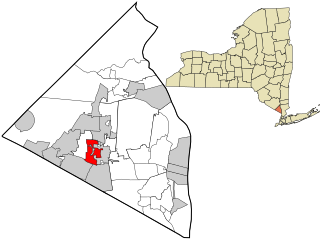
Monsey is a hamlet and census-designated place in the town of Ramapo, Rockland County, New York, United States, located north of Airmont, east of Viola, south of New Hempstead, and west of Spring Valley. The village of Kaser is surrounded by the hamlet of Monsey. The 2020 census listed the population at 26,954; a 46% increase since the 2010 census.

Chabad, also known as Lubavitch, Habad and Chabad-Lubavitch, is an Orthodox Jewish Hasidic dynasty. Chabad is one of the world's best-known Hasidic movements. It is one of the largest Hasidic groups as well as one of the largest Jewish religious organizations in the world. Unlike most Haredi groups, which are self-segregating, Chabad mainly operates in the wider world and it caters to secularized Jews.

There have been Jewish communities in the United States since colonial times, with individuals living in various cities before the American Revolution. Early Jewish communities were primarily composed of Sephardi immigrants from Brazil, Amsterdam, or England.

Satmar is a Hasidic group founded in 1905 by Grand Rebbe Joel Teitelbaum, in the city of Szatmárnémeti, Hungary. The group is an offshoot of the Sighet Hasidic dynasty. Following World War II, it was re-established in New York.

The Crown Heights riot was a race riot that took place from August 19 to August 21, 1991, in the Crown Heights section of Brooklyn, New York City. Black residents attacked Orthodox Jewish residents, damaged their homes, and looted businesses. The riots began on August 19, 1991, after two children of Guyanese immigrants were unintentionally struck by a driver running a red light while following the motorcade of Rebbe Menachem Mendel Schneerson, the leader of Chabad, a Jewish religious movement. One child died and the second was severely injured.

American Jews or Jewish Americans are American citizens who are Jewish, whether by culture, ethnicity, or religion. According to a 2020 poll conducted by Pew Research, approximately two thirds of American Jews identify as Ashkenazi, 3% identify as Sephardic, and 1% identify as Mizrahi. An additional 6% identify as some combination of the three categories.
Jacob Barsimson was one of the earliest Jewish settlers at New Amsterdam, and the earliest identified Jewish settler within the present limits of the state of New York. He was an Ashkenazi Jew of Central European background.

The Yiddish Wikipedia is the Yiddish-language version of Wikipedia. It was founded on March 3, 2004, and the first article was written November 28 of that year.
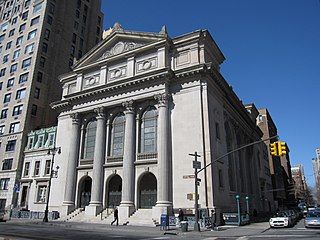
The Congregation Shearith Israel, often called The Spanish and Portuguese Synagogue, is an Orthodox Jewish synagogue located at 2 West 70th Street, at Central Park West, on the Upper West Side of Manhattan in New York City, New York, United States.

The history of the Jews in Antwerp, a major city in the modern country of Belgium, goes back at least eight hundred years. Jewish life was first recorded in the city in the High Middle Ages. While the Jewish population grew and waned over the centuries, by the beginning of World War II Antwerp had a thriving Jewish community comprising some 35,000, with many Jews connected to the city's diamond industry. The Nazi occupation of Antwerp from 1940 and The Holocaust decimated the city’s Jewish population. By the time of Antwerp's liberation in September 1944, the Jewish population had fallen to around 1,200.

The History of the Jews in Amsterdam focuses on the historical center of the Dutch Jewish community, comprising both Portuguese Jews originally from both Spain and Portugal and Ashkenazi Jews, originally from central Europe. The two separate groups have had a continuing presence since the seventeenth century. Amsterdam has been called a Jerusalem of the West and the "Dutch Jerusalem". The Holocaust in the Netherlands devastated the Jewish community, with the Nazis murdering some 75% of the approximately 80,000 Jews at time present in Amsterdam, but the community has managed to rebuild a vibrant and living Jewish life for its approximately 15,000 present members.

Jews comprise approximately 16% of New York City's population, making the Jewish community the largest in the world outside of Israel and the world's largest metropolitan Jewish community. As of 2020, just over 1.3 million Jews lived in the five boroughs of New York City, and over 1.912 million Jews lived in New York-Newark-Jersey City overall.

Jews in Los Angeles comprise approximately 17.5 percent of the city's population, and 7% of the county's population, making the Jewish community the largest in the world outside of New York City and Israel. As of 2015, over 700,000 Jews live in the County of Los Angeles, and 1.232 million Jews live in California overall. Jews have immigrated to Los Angeles since it was part of the Mexican state of Alta California, but most notably beginning at the end of the 19th century to the present day. The Jewish population rose from about 2,500 in 1900 to at least 700,000 in 2015. The large Jewish population has led to a significant impact on the culture of Los Angeles. The Jewish population of Los Angeles has seen a sharp increase in the past several decades, owing to internal migration of Jews from the East Coast, as well as immigration from Israel, France, the former Soviet Union, the UK, South Africa, and Latin America, and also due to the high birth rate of the Hasidic and Orthodox communities who comprise about 10% of the community's population.

The Jewish community of the Greater Cleveland area comprises a significant ethnoreligious population of the U.S. State of Ohio. It began in 1839 by immigrants from Bavaria and its size has significantly grown in the decades since then. In the early 21st century, Ohio's census data reported over 150,000 Jews, with the Cleveland area being home to more than 50% of this population. As of 2018, Greater Cleveland is the 23rd largest Jewish community in the United States. As of 2023, the Cleveland Jewish Community is estimated to be about 100,000 people.
The history of the Jews in Atlanta began in the early years of the city's settlement, and the Jewish community continues to grow today. In its early decades, the Jewish community was largely made up of German Jewish immigrants who quickly assimilated and were active in broader Atlanta society. As with the rest of Atlanta, the Jewish community was affected greatly by the American Civil War. In the late 19th century, a wave of Jewish migration from Eastern Europe brought less wealthy, Yiddish speaking Jews to the area, in stark contrast to the established Jewish community. The community was deeply impacted by the Leo Frank case in 1913–1915, which caused many to re-evaluate what it meant to be Jewish in Atlanta and the South, and largely scarred the generation of Jews in the city who lived through it. In 1958, one of the centers of Jewish life in the city, the Hebrew Benevolent Congregation, known as "The Temple" was bombed over its rabbi's support for the Civil Rights Movement. Unlike decades prior when Leo Frank was lynched, the bombing spurred an outpouring of support from the broader Atlanta community. In the last few decades, the community has steadily become one of the ten largest in the United States. As its population has risen, it has also become the Southern location of many national Jewish organizations, and today there are a multitude of Jewish institutions. The greater Atlanta area is considered to be home to the country's ninth largest Jewish population.
Anabaptists and Jews have had interactions for several centuries, since the origins of Anabaptism in the Radical Reformation in early modern Europe. Due to the insularity of many Anabaptist and Jewish communities, Anabaptist–Jewish relations have historically been limited but there are notable examples of interactions between Anabaptists and Jews. Due to some similarities in dress, culture, and language, Amish and Mennonite communities in particular have often been compared and contrasted to Haredi and Hasidic Jewish communities.
Dutch people have had a continuous presence in New York City for nearly 400 years, being the earliest European settlers. New York City traces its origins to a trading post founded on the southern tip of Manhattan Island by Dutch colonists in 1624. The settlement was named New Amsterdam in 1626 and was chartered as a city in 1653. Because of the history of Dutch colonization, Dutch culture, politics, law, architecture, and language played a formative role in shaping the culture of the city. The Dutch were the majority in New York City until the early 1700s and the Dutch language was commonly spoken until the mid to late-1700s.
Black Jews in New York City comprise one of the largest communities of Black Jews in the United States. Black Jews have lived in New York City since colonial times, with organized Black-Jewish and Black Hebrew Israelite communities emerging during the early 20th century. Black Jewish and Black Hebrew Israelite communities have historically been centered in Harlem, Brooklyn, The Bronx, and Queens. The Commandment Keepers movement originated in Harlem, while the Black Orthodox Jewish community is centered in Brooklyn. New York City is home to four historically Black synagogues with roots in the Black Hebrew Israelite community. A small Beta Israel (Ethiopian-Jewish) community also exists in New York City, many of whom emigrated from Israel. Black Hebrew Israelites are not considered Jewish by the New York Board of Rabbis, an organization representing mainstream Rabbinic Judaism. However, some Black Hebrew Israelite individuals in New York City are recognized as Jewish due to converting through the Orthodox, Conservative, or other Jewish movements.
The history of Jews in New Jersey started with the arrival of Dutch and English traders and settlers in the late 1600s. According to the Berman Jewish DataBank's 2019 survey, New Jersey is the state with the fourth highest total population of Jews at 545,450 and is also the state with the third highest percent of Jews at 6.1%. This means that New Jersey is home to 7.8% of the American Jewish population.
